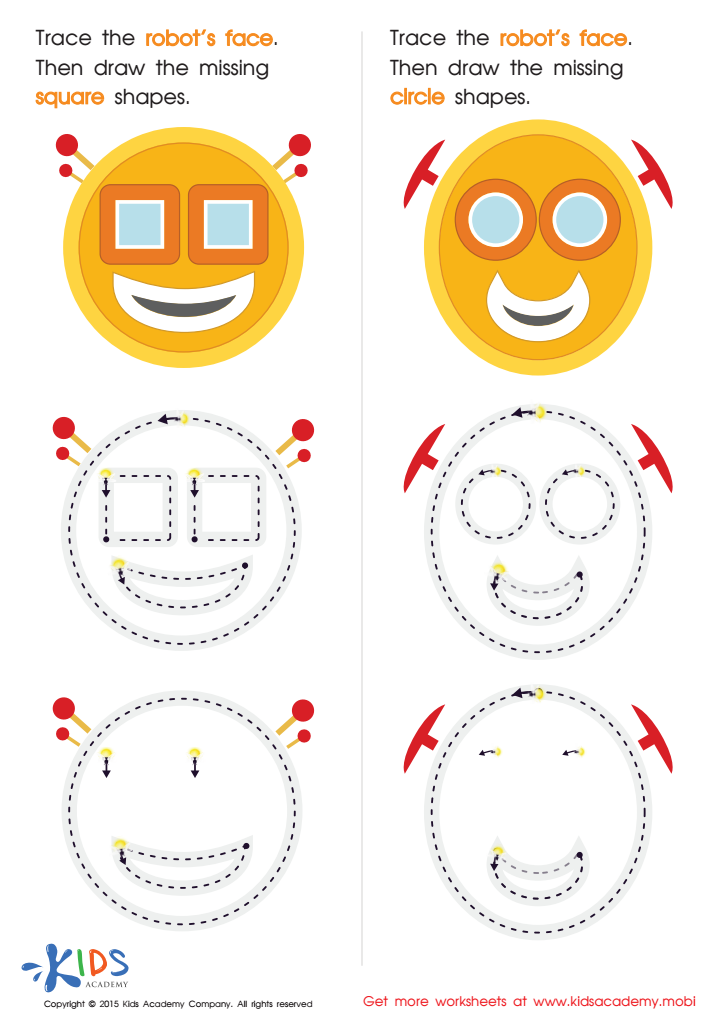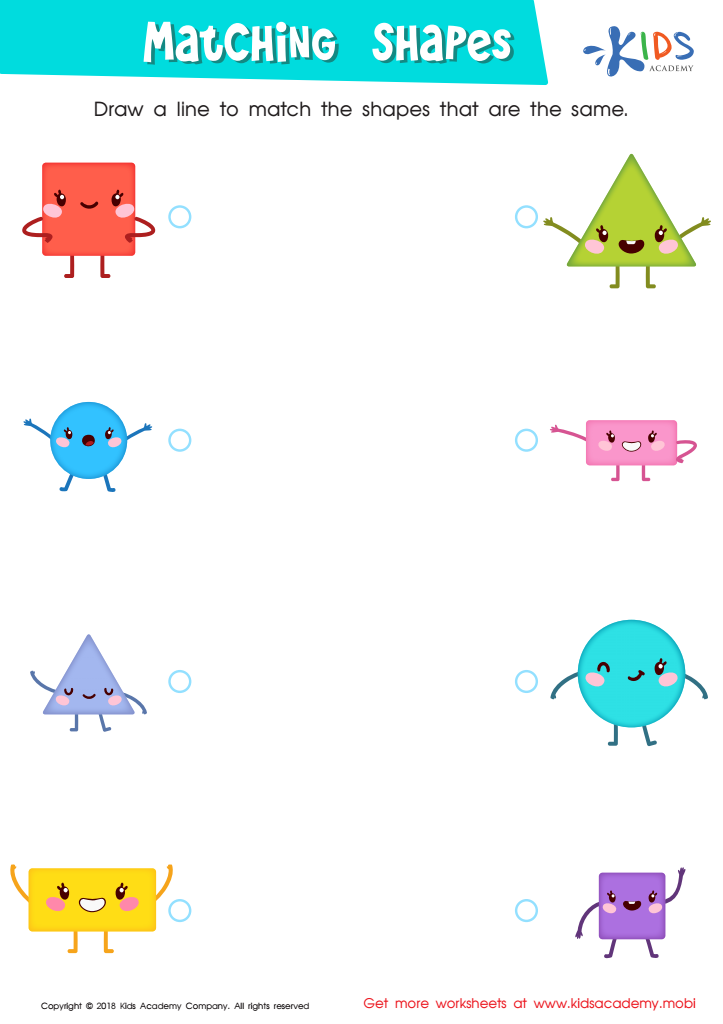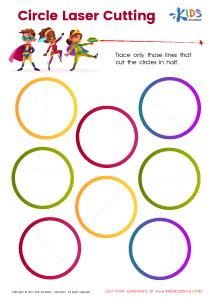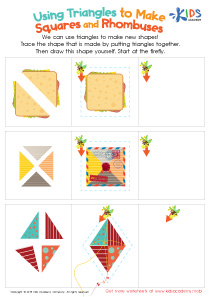Cognitive Development Normal 2D Shapes Worksheets for Ages 3-9
5 filtered results
-
From - To
Enhance your child's cognitive development with our engaging 2D shapes worksheets designed for ages 3-9. These worksheets provide a fun and interactive way for young learners to explore shapes, encouraging skills such as recognition, comparison, and spatial understanding. Ideal for classroom or home learning, each activity is tailored to inspire critical thinking and creativity while reinforcing foundational math concepts. From basic to more complex shape recognition exercises, our resources cater to various learning styles. Strengthen your child's cognitive abilities and lay the groundwork for future mathematical success with our thoughtfully crafted 2D shapes worksheets!


Practicing to Draw Circles And Squares Printable


Geometry: part 1 Worksheet


Preschool Geometry Match Up Worksheet


Learning to Draw Crescents And Triangles Worksheet


Matching Shapes Worksheet
Cognitive development in young children is critical, especially in areas like understanding 2D shapes, which plays a foundational role in mathematics, geometry, and spatial awareness. From ages 3 to 9, children begin to recognize, differentiate, and categorize shapes, laying the groundwork for more complex problem-solving skills.
By engaging with normal 2D shapes—such as circles, squares, triangles, and rectangles—children enhance their observational abilities and cultivate critical thinking. Recognizing shapes aids in understanding their properties, such as sides and angles, which is essential for future math concepts. Furthermore, shape recognition fosters creativity as children combine and manipulate shapes in art, design, and building activities.
For parents and teachers, focusing on cognitive development through 2D shapes can enrich a child’s learning experience. Educators can create interactive lessons incorporating games, puzzles, and real-world applications, making learning enjoyable and engaging. Parents, too, can provide reinforcement at home through shape identification and exploration in everyday life.
Ultimately, nurturing cognitive development through 2D shapes not only supports academic success but also prepares children for a world increasingly driven by technology and design, paving the way for lifelong skills.
 Assign to My Students
Assign to My Students















